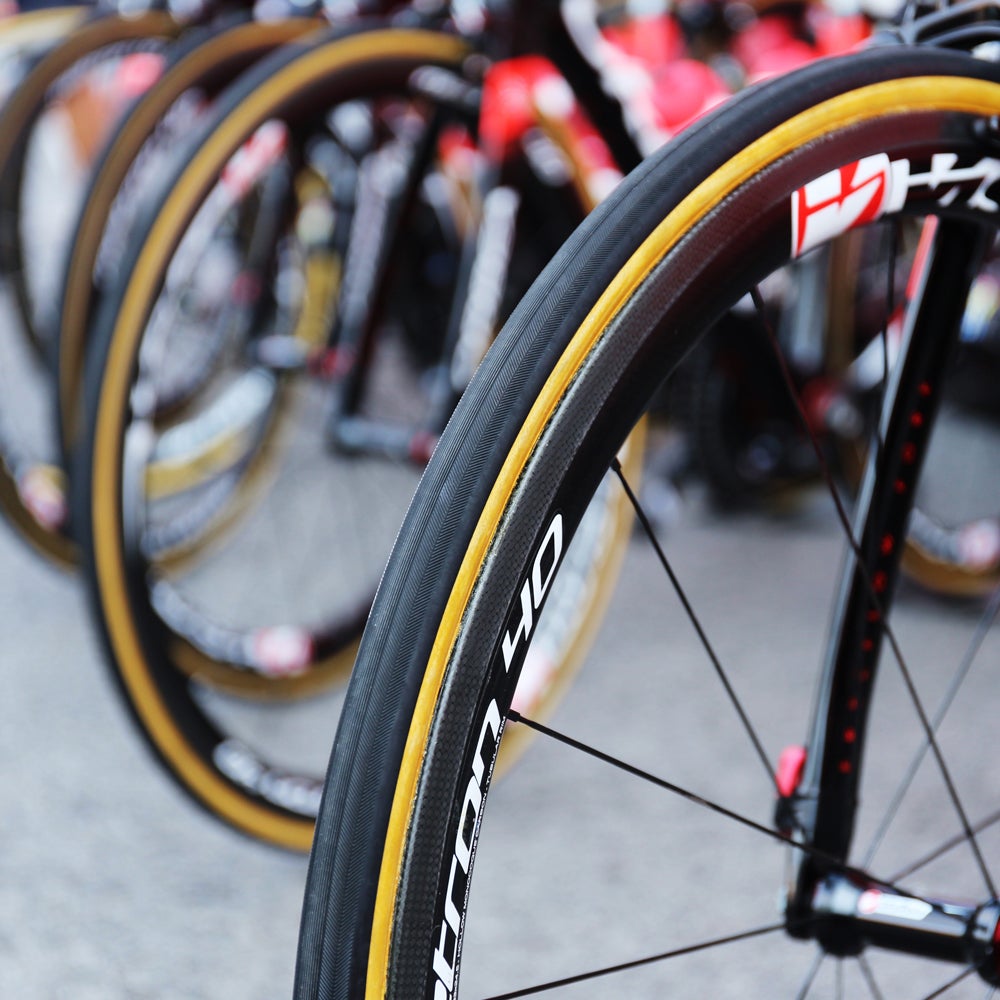PSSSSHHH!!!
Ting-ting-ting-ting…
#*@#*@@!!!
The first sound was the drywall screw entering the tread of my rear tire, piercing the tube, and exiting through the sidewall. The second was the head of the screw hitting my chainstay with each wheel revolution. The third was me shouting the requisite expletive.
It was immediately clear to me the tire was essentially destroyed, but I wasn't about to let a little screw (okay, a big screw) screw me out of a ride. So I dipped into my wallet and booted the tire with a $10 bill. Alas, once I'd gotten everything buttoned up I could still see Alexander Hamilton staring smugly back at me through the gash in the tire, and as I rode away the compromised casing caused the rear wheel to wobble disconcertingly.
There was no way around it—it was either limp to the nearest shop and buy a new tire, or else turn around and go home.
More than one flat on the same model tire makes us forever wary of it in the same way the cat is eternally suspicious of the toilet after falling into it.
Under ordinary circumstances, buying new tires for a drop-bar bicycle is a straightforward as it gets. Life may be full of complex choices, but mercifully some of them are no-brainers. I prefer aisle to window, my favorite La Croix flavor is Pamplemousse, and my default road bike tire is the . Done and done.
But these weren't ordinary circumstances, and the shop didn't have my trusty Paselas. (It seems few do, at least where I live. I suspect it's because they're decidedly unsexy, and their tan sidewalls evoke panniers and bikes with triple chainrings and bar-end shifters.) Instead, I stood face to face with a wall full of hooks from which hung all the au courant tire offerings. For the first time in years, I had to try and make sense of the bewildering pneumatic landscape all over again.
In modern bike parlance what I wanted was called a “gravel” tire, I knew that much. Here's the criteria for a gravel tire:
- Wider than a typical road tire yet narrower than a mountain bike tire for traction and comfort on varied terrain;
- A modest tread;
- Lighter and more supple than a commuting tire.
You know, like a Pasela.
Of course, there is one crucial difference between a gravel tire and a regular one, which is that putting the word “gravel” on it means the company gets to ask for more money. Well, that and “tubeless compatibility,” which is a more technical-sounding way of saying it's a little harder to get the thing on and off the rim.
Cyclists love to overthink things, and perhaps no component offers us more opportunity to do so than the bicycle tire. It's the single most important factor in determining your bicycle's ride quality, but at the same time it's pretty boring, and indeed the better the tire, the more boring it is. (To wit: the Pasela.) Unfortunately consumers hate boring, which means it's all too easy for manufacturers to dress their tires up with oversized labels and ascribe mystical properties to them, and for riders to accept features that just plain don't do anything but seem like they should because you also find them on motorcycle and car tires.
on a bicycle tire?
Gimme a break.
Then there's luck. A flat can ruin your ride, so when they happen to us we tend to make broad proclamations about whatever tire we were using at the time—and more than one flat on the same model makes us forever wary of it in the same way the cat is eternally suspicious of the toilet after falling into it. Check out the reviews on any given tire and they genereraly fall under three categories:
1. “This tire is great! 1,000 miles with no flats.”
2. “This tire sucks! Five flats in 100 miles.”
And, my personal favorite:
3. “Tire was great for 3,000 miles, but then I just kept getting flats!”
Reviewer #1 had good luck, Reviewer #2 had bad luck, and Reviewer #3 just plain wore out the damn tire.
And what about tread patterns? Those are important, right? Well, if it's low-profile enough not to slow you down on the pavement then it's probably at least as decorative as it is functional once you hit the dirt. That's not to say it's completely useless, but it's probably more effective as a wear indicator than it is at enhancing your traction.
Nevertheless, riders have an endless capacity for obsessing about tread patterns, and nowhere is this more evident than in the sport of cyclocross. It's basically just riding around in the grass for 45 minutes to an hour, or else it's so muddy that you've got to get off the bike and run. Yet racers will spend hours deliberating over whether to run the file or the diamond tread, stopping just short of taking a pinch of soil from the course and tasting it, when in reality the tread pattern on their shoes probably makes more of a difference.
And yes, obviously the tread pattern and profile is more of a factor once you're talking about full-blown mountain-bike tires, but even then it's all just a bunch of bumps more than any of us would care to admit.
So which tire did I ultimately choose? Well, after much deliberation I went with the one that seemed the most Pasela-like, which happened to have a hip, edgy, and likely useless tread pattern resembling a severe case of scaly elbow skin. Price-wise it was a 1:1 ratio between dollars and threads per inch, which was a bit steep, but it did say “gravel” on it so, what are you gonna do? As for ride quality, it takes time to figure out the perfect #whatpressureyourunning for a new tire, so I will refrain from comparing it to the Pasela that it replaced. However, I was able to finish my ride, so for that reason alone it was worth every penny. And if I put some serious mileage on it without any flats, I'll probably even consider buying another one someday.
Because that's how tires work.


